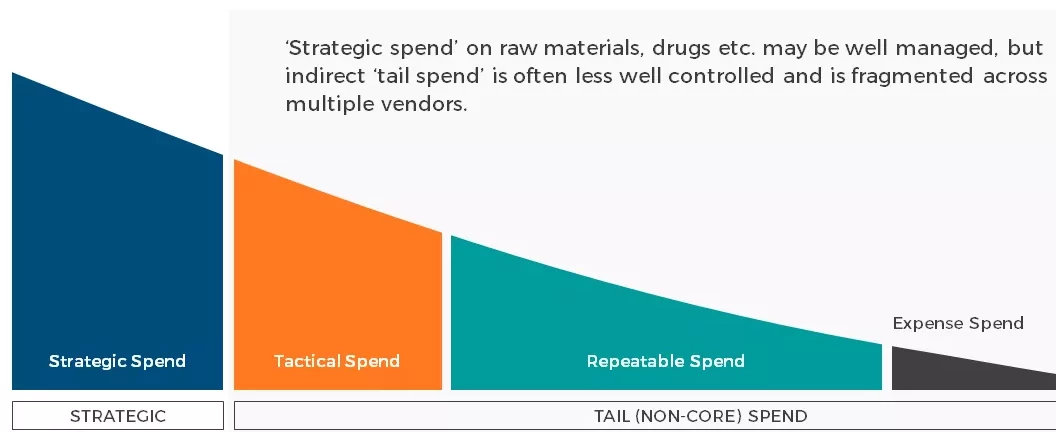The automated tail spend category is defined by how you buy
A Automated category strategy focuses on a group of suppliers who can be managed within a common strategic framework to exploit competitive tension or synergies in the marketplace.By contrast, tail spend is a mixed lot of suppliers who have little in common, and there may be no competitive tension among them. A traditional market-centered strategy does not apply.
Instead, there can be a process-centered strategy defined by patterns of procurement. These strategies focus on how you buy rather than what the market looks like. The strategy for this category, or group of spends, is to automate the process.
Automation depends on repeatability
The following criteria define the population of suppliers that can be addressed with an automation strategy in supply chain and procurement. Consistent dollar levels of spending for the supplier. WHAT you buy may change day to day, but multi-year volume is predictable. Aggregate spending over the suppliers in the category is significant. Spend includes SKUs or service offerings which are procured repeatedly. Unit pricing can be tracked over time and easily specified in negotiations and in a contract.
Automation enhanced with AI can take over many tasks that used to require humans:

Clean, enhance, and categorize the spend data
Build an automation-ready spend cube
Develop savings targets and strategies by supplier
Automate the engagement and negotiation with suppliers
Automate the memorialization of agreed terms to finalize contracting
These aspects of an automated tail spend category create equivalence with a traditional category strategy.
Automation + AI gives procurement leaders a seat at the table
When corporate leadership has a mandate to cut costs, reduce headcount, and improve transparency, automated procurement can provide an innovative solutions that is easy to roll out.
Axtom provides automated procurement services and we would be very happy to give you a demo.
About this article
This article was written without the use of AI. The author, Peter Benda, is a 30 year veteran management consultant. His client work includes strategic sourcing and supply chain management, workforce effectiveness, front line productivity improvement, governance design, and data analysis. His industry experience includes mining, utilities, manufacturing, financial services, transportation, defense R&D, federal and state agencies, and technology startups. He has published market research and holds several patents.
For more details and information, visit our LinkedIn profile
